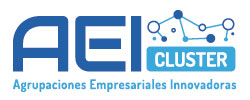Automation is always a source of doubt when discussing its implementation in a sector..
While at the beginning of the century, with the assembly line in the automotive sector, jobs were significantly reduced, I believe that today we all understand that the sector has developed immensely.
Furthermore, I would say that none of us would be professionally satisfied in an assembly line, tightening the same screw over and over again for 8 hours a day. These kinds of repetitive tasks are attempted to be improved by automated processes so that people can add higher value to the process, such as better quality control, time to optimize, or prevent situations..
Ultimately, automation brings about a reduction in less skilled jobs, but in exchange, the industry evolves and creates a new demand for more skilled professionals, typically with better salary conditions.
In this line, the rapidly growing sector such as Data Centers is pressured by deadlines, investments, profitability... When is there time to do it better
This is where systems aimed at unmanned operation in Data Centers have a promising future because it will be a way to optimize operations without people having to invest more time. This ensures availability, reduces costs, allows for more planned operations, and includes automated contingency plans to reduce the impact of any type of incident..
Therefore, in this second phase of the DC AIOPs project, which involves the participation of Bjumper , It aims to delve into this aspect of unmanned operation, based on a comprehensive monitoring system that has transitioned from an IoT network to a system using cable robots. These robots will enable the exploration of new avenues to enhance real-time information capture, while the investment in the IoT network can be reduced. Additionally, it will facilitate access to this technology in the near future, thanks to the reduction of the economic barrier to entry..
The cable robot's mission is to monitor temperature, humidity, and pressure in various positions within the clean rooms, including aisles and racks, to provide tailored information according to specific needs at any given time..
An IoT network is designed with a certain number of sensors; however, the IT equipment in data centers can quickly change their consumption and, therefore, the working conditions of the data center. It's these situations that can lead to risk scenarios, and perhaps the granularity of the monitoring at these moments may be insufficient..
Through the cable robot, we can program it so that, for example, if a particular area of the data center reaches a predetermined "hot spot" value, we can instruct the robot to increase the number of measurements in that area to be prepared for a potential risk situation..
The mission of DC AIOps is to adapt automation processes from other industries for application in the data center sector. Therefore, the working group involved in the project aims to provide the sector with a path towards more sustainable growth and efficiency for the future.
The project is supported by the Ministry of Industry, Trade, and Tourism, and backed by the European Union through the Recovery, Transformation, and Resilience Plan




